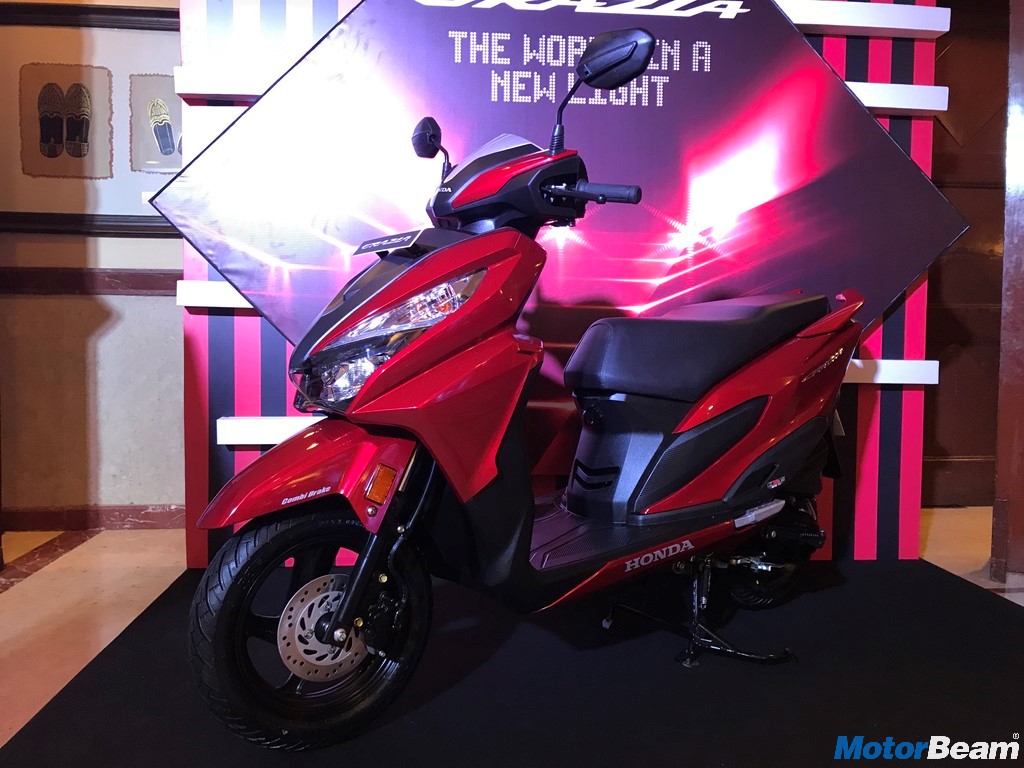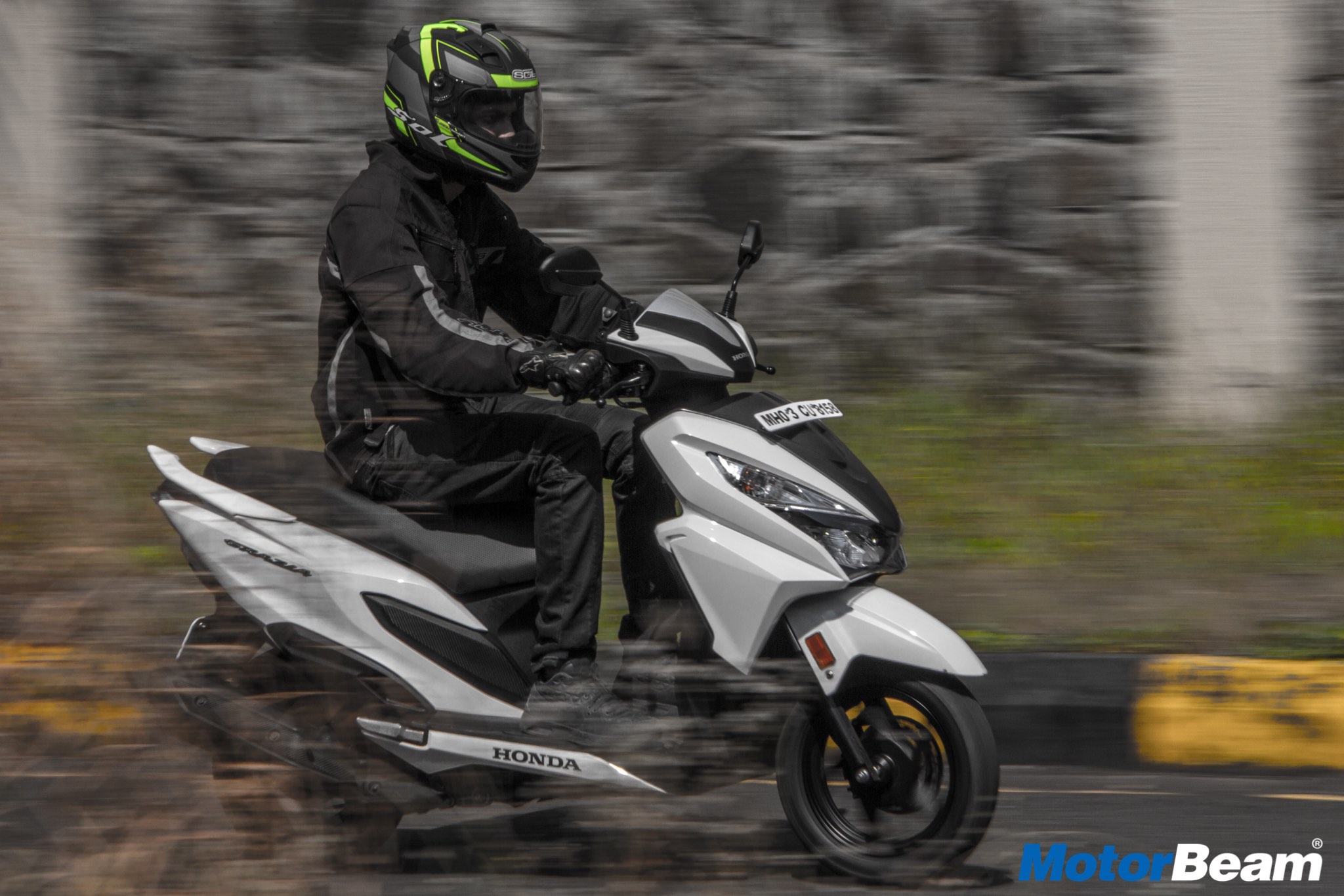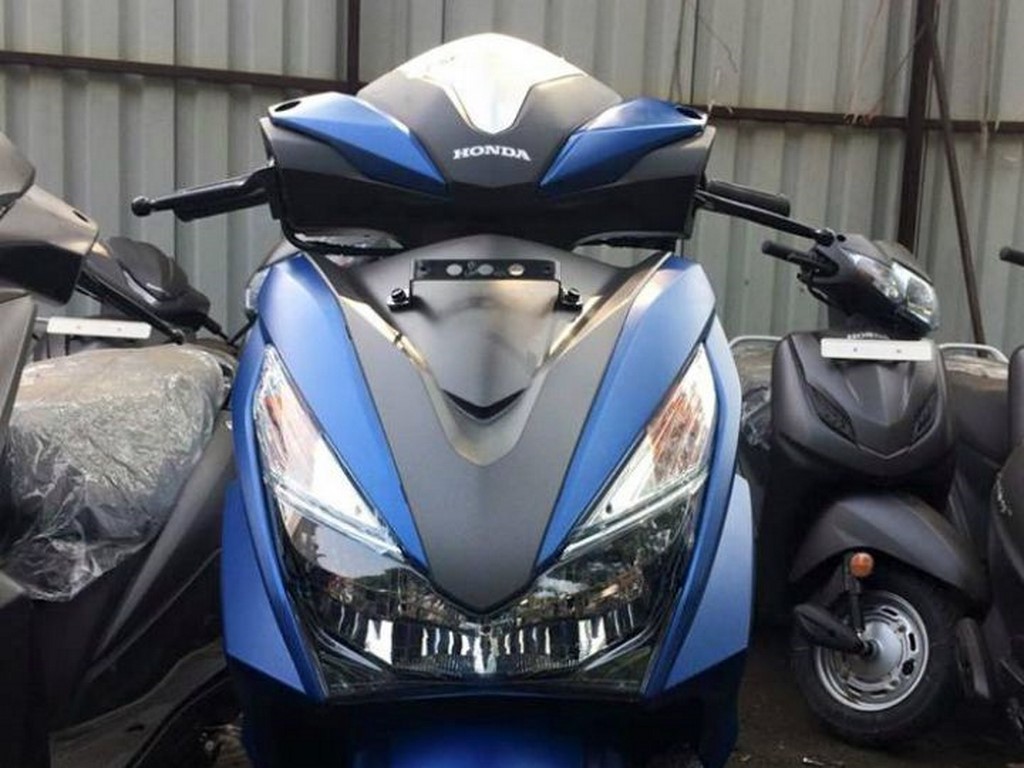The Suzuki Access has a simple blend of retro with a hint of modern in its cluster
Instrument Cluster and Switchgear – Both these scooters have completely different approaches when it comes to the speedometer. On one hand, we have the Access with its rather simplistic design. The plain white instrument cluster houses a speedometer which is analogue while the fuel meter and the two trip meters are digital. The Grazia, on the other hand, has a complete digital speedometer, fuel meter, one trip meter, RPM and has a new feature called the 3 Step ECO mode indicator. It essentially is three bars of light that change based on the way you’re riding and tell you how much efficiency are you getting out of the engine.
The Honda Grazia goes in tech blazing with a full digital console
Three bars meaning best possible mileage and no bars meaning worst possible mileage. It’s not dim and is clear to look at even in broad daylight. The switchgear quality found on both these scooters are decent but I can’t help but mention how annoying I find the parking brake on the Grazia, the Access in comparison has such an easy to use and comfortable switch. While the Suzuki Access gets a key operated switch to access the under seat storage, the Grazia gets a button, but I somehow prefer the key.
In terms of comfort, both these scooters can hold their own and are quite comfortable
Ergonomics – Here is where both of these are quite similar. When it comes to comfort, both scooters are on par and you cannot go wrong with whichever one of these you choose. However, there are small factors here and there that might sway you from one to the other. The Suzuki Access has double hooks on the footboard, unlike the Grazia which only gets one. While Honda does give you a special closable compartment for your phone, Suzuki has one that’s big enough to fit a small bottle but sadly isn’t closeable for obvious reasons. The compartment found on the Access is much deeper and can hold more items. Both these scooters come with optional USB charging ports. When it comes to under seat storage, both these scooters offer decent space however, the Access has a deeper boot which allows it to even fit a full-size helmet.




